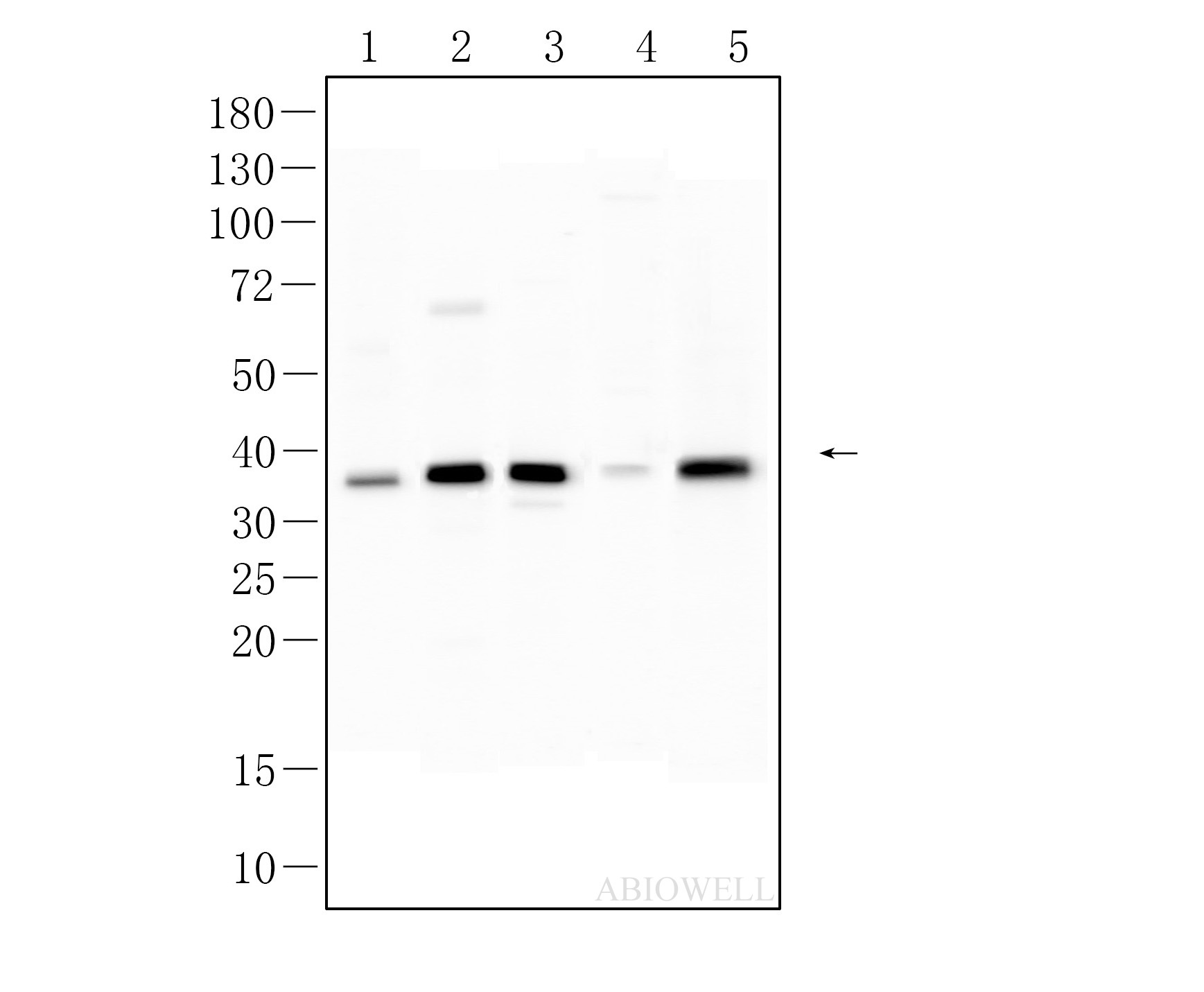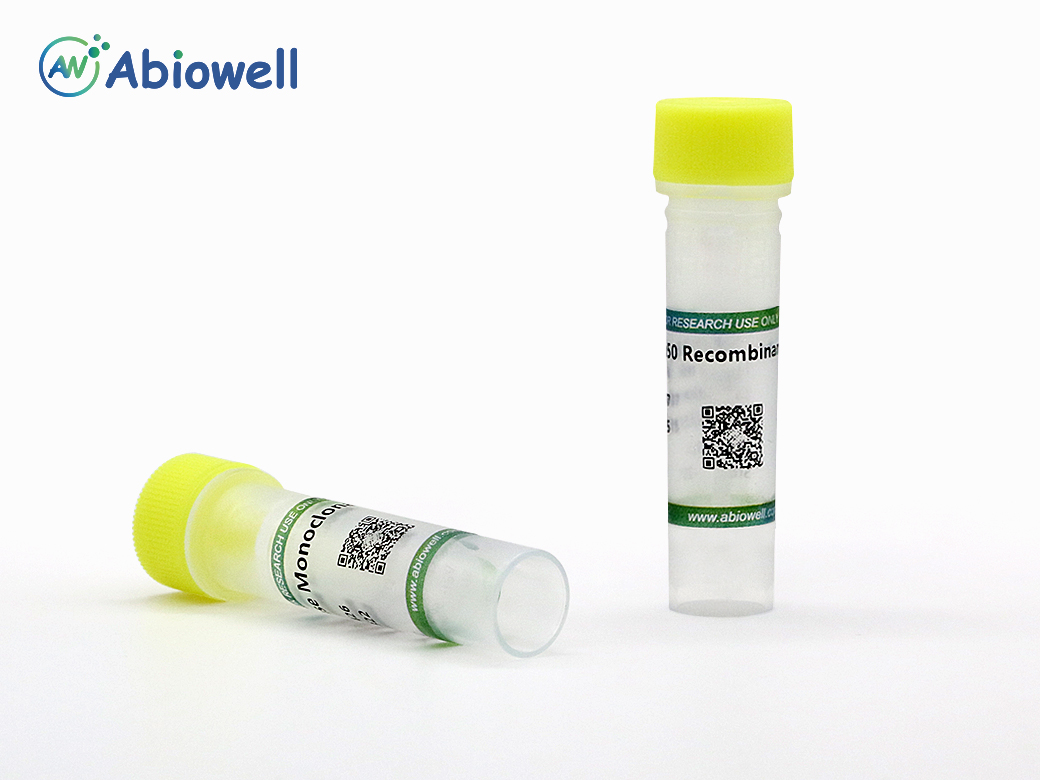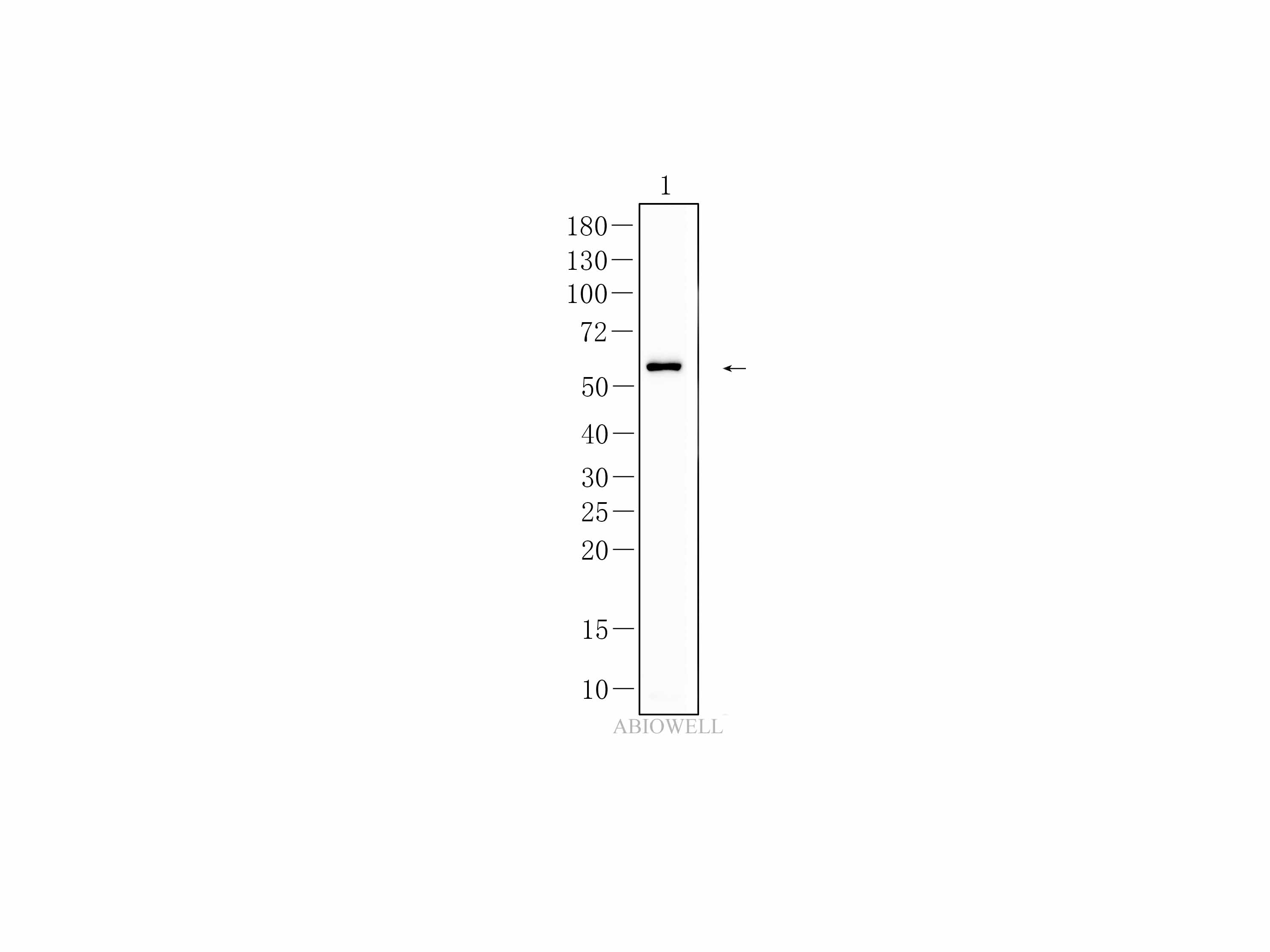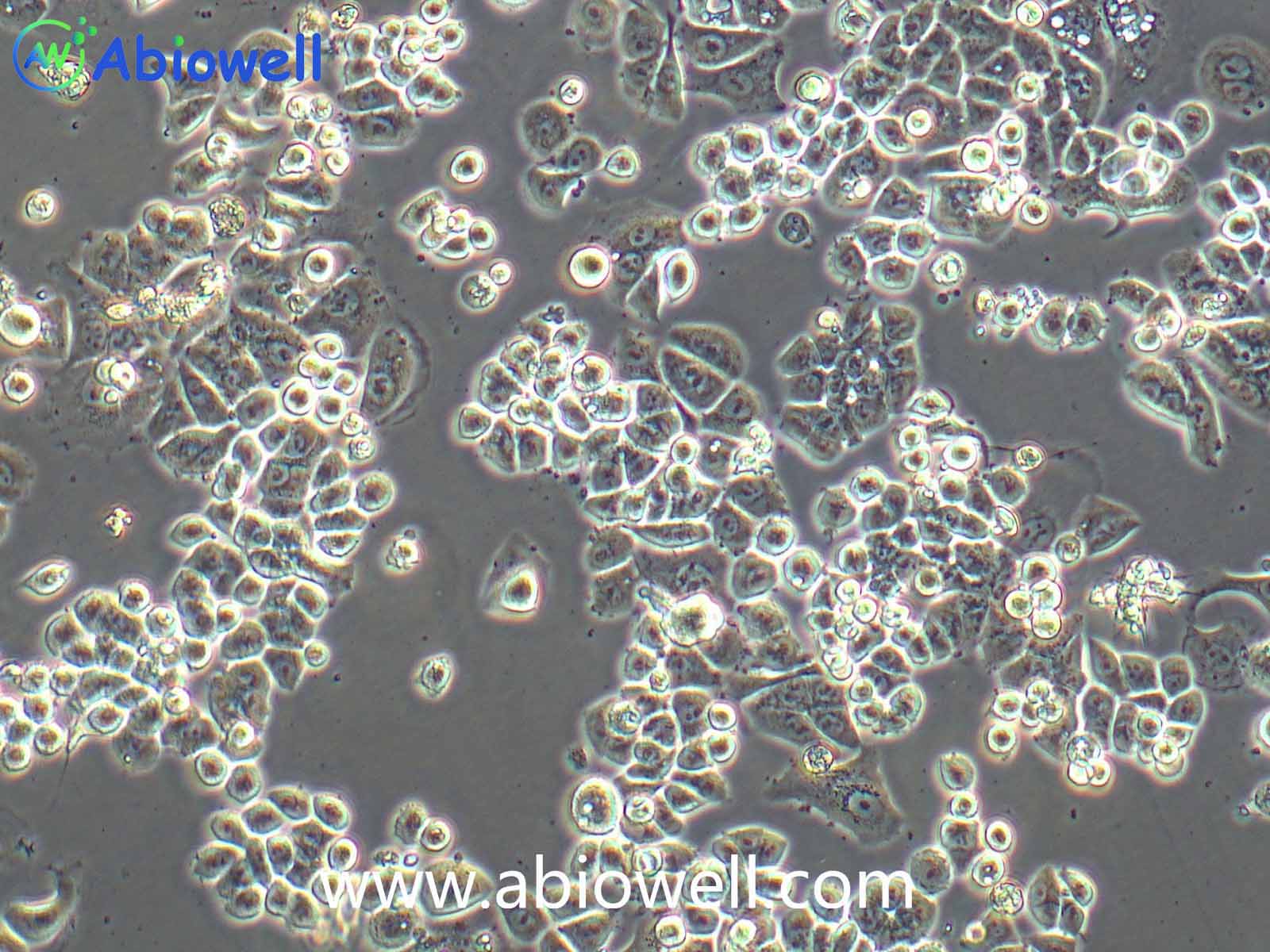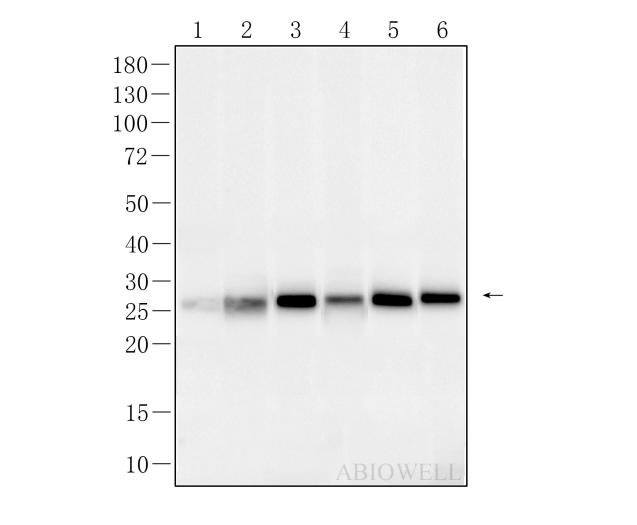Parkin Recombinant Rabbit Monoclonal Antibody
-
-
- 20μL
- ¥620
- 1-3个工作日
-
- 50μL
- ¥1250
- 1-3个工作日
-
- 100μL
- ¥2200
- 1-3个工作日
Product Details | Host Species: Rabbit | Reactivity: Human,Mouse,Rat | Molecular Wt: 52 kDa | |
Clonality: Monoclonal | Isotype: IgG | Concentration: 1mg/ml | ||
Other Names: PARK 2; PARK2; PRKN; PRKN2; E3 ubiquitin ligase; E3 ubiquitin-protein ligase parkin; Parkinson juvenile disease protein 2; Parkinson disease protein 2; FRA6E; Park2; Parkin 2; AR JP; LPRS 2; LPRS2; PARK2/Parkin; Parkin; PDJ | ||||
Formulation: Liquid in PBS containing 50% glycerol, 0.5% BSA and 0.02% sodium azide. | ||||
Purification: Affinity-chromatography | ||||
Storage: Store at -20°C. Stable for one year after shipment. Aliquoting is unnecessary for -20°C storage. | ||||
Applications | WB 1:500-1:2000 | |||
Immunogen Information | Gene Name: PRKN | Protein Name: E3 ubiquitin-protein ligase parkin | ||
Gene ID: 5071 (Human) | SwissPro: O60260 (Human) | |||
Subcellular Location: Cytoplasm, cytosol. Nucleus. Endoplasmic reticulum. Mitochondrion. Mitochondrion outer membrane. Cell projection, neuron projection. Postsynaptic density. Presynapse. | ||||
Immunogen: Synthetic peptide within N-terminal human Parkin. | ||||
Specificity: Parkin Monoclonal Antibody detects endogenous levels of Parkin protein. | ||||
| Product images | |
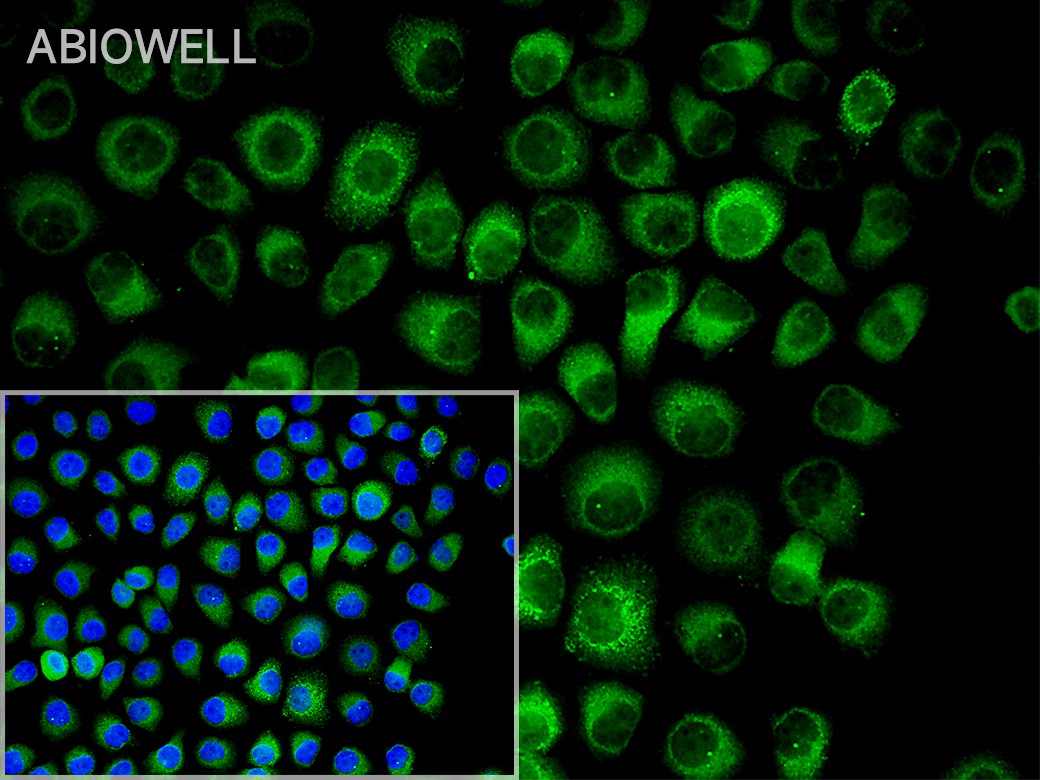
|
Fig: Immunocytochemistry analysis of HeLa cells labeling Parkin with rabbit anti-Parkin antibody (AWA10147) at 1/50 dilution(green). Cells were fixed in 4% paraformaldehyde for 10 minutes at 37 ℃, permeabilized with 0.03% Triton X-100 in PBS for 30 minutes, and then blocked with 5% BSA for 60 minutes at 37 ℃. Cells were then incubated with rabbit anti-Parkin antibody (AWA10147) at 1/50 dilution in 2% negative goat serum overnight at 4 ℃. Goat anti-Mouse IgG (H+L) Secondary Antibody(Alexa Fluor 488, AWS0005) was used as the secondary antibody at 1/200 dilution for 60 minutes at 37 ℃. Nuclear DNA was labelled in blue with DAPI(AWC0291). |
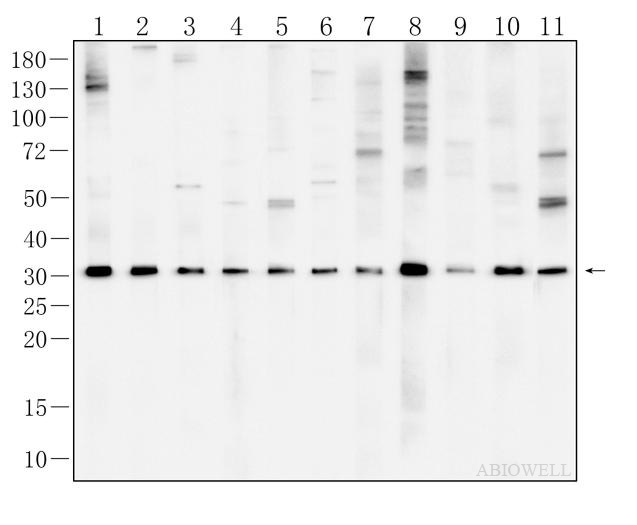
|
Fig : Western blot analysis of Parkin on different lysates. Proteins were transferred to a NC membrane and blocked with 5% NF-Milk in TBST for 1 hour at room temperature. The primary antibody ( AWA10174, 1/1000) was used in PBST at room temperature for 2 hours. Goat Anti-Rabbit IgG - HRP Secondary Antibody (AWS0002) at 1:5,000 dilution was used for 1 hour at room temperature. Positive control: Lane 1: Hela cell Lane 2: HUVEC cell Lane 3: Hek293T cell Lane 4: U251 cell Lane 5: GL261 cell Lane 6: SH-SY5Y cell Lane 7: HT22 cell Lane 8: N2A cell Lane 9: PC-12 cell Lane 10: PC-9 cell Lane 11: LLC cell Predicted molecular weight: 52 kDa Observed molecular weight: 31 kDa Exposure time: 45 seconds |
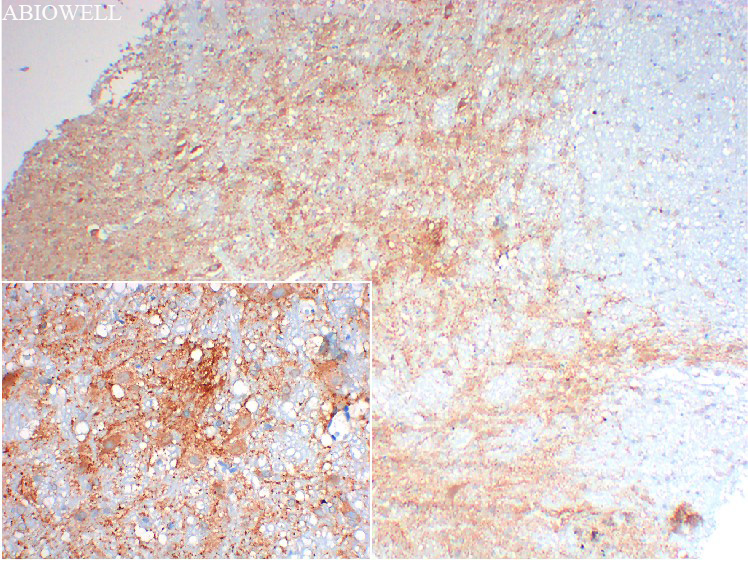
|
Fig : Immunohistochemical analysis of paraffin-embedded Rat-cerebellum tissue with Rabbit anti-parkin (AWA10174) at 1/200 dilution. The section was pre-treated using heat mediated antigen retrieval with Sodium citrate buffer (pH 6.0) for 20 minutes. The tissues were blocked in 3% H2O2 for 15 minutes at room temperature, washed with ddH2O and PBS, and then probed with the primary antibody (AWA10174) at 1/200 dilution for 1 hour at room temperature. The detection was performed using an HRP conjugated compact polymer system(ABIOWELL, AWI0629). DAB was used as the chromogen. Tissues were counterstained with hematoxylin and mounted with DPX. |
-
-
- 20μL
- ¥620
- 1-3个工作日
-
- 50μL
- ¥1250
- 1-3个工作日
-
- 100μL
- ¥2200
- 1-3个工作日
-
相关产品
-
Cdk6 Recombinant Rabbit Monoclonal Antibody
GAPDH Rabbit Polyclonal Antibody
GFAP Recombinant Mouse Monoclonal Antibody
Ki67 Rabbit Monoclonal Antibody
HMGB1 Recombinant Rabbit Monoclonal Antibody
SQSTM1/p62 Mouse Monoclonal Antibody
Bcl-2 Recombinant Rabbit Monoclonal Antibody
SOD2 Rabbit Polyclonal Antibody

